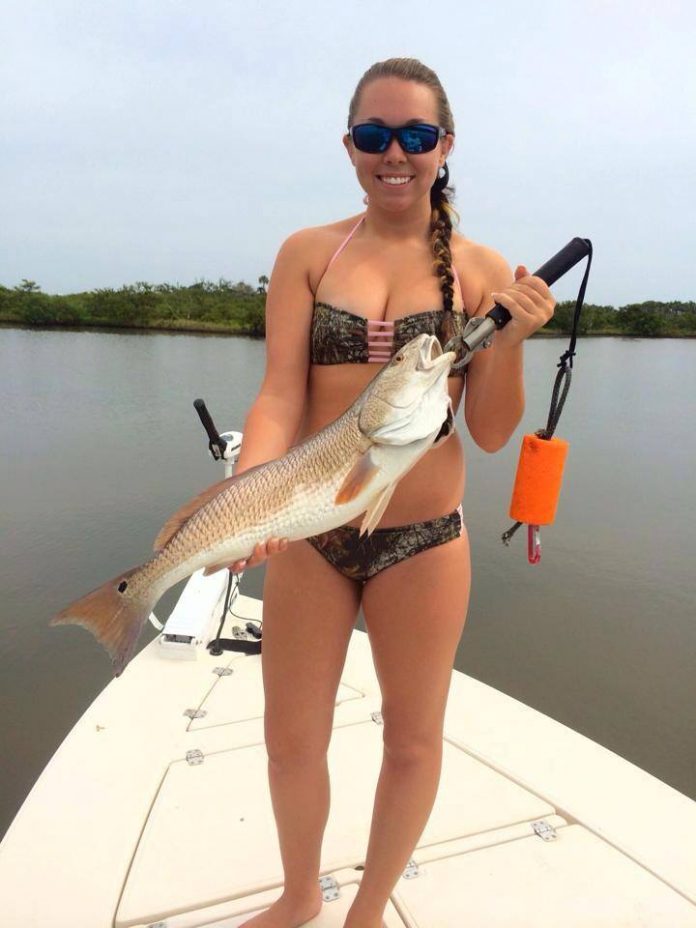Fishing in Central Florida has shown some improvement in this past week with our best action coming from anglers fishing freshwater locations like the St Johns River. Extremely low water conditions experienced this year are the complete opposite from last year, but last week’s rainfall has water levels moving in the right direction. The Haulover Cannel water gauge (https://waterdata.usgs.gov/nwis/uv?02248380 ) is showing an 8-inch increase and the St Johns River gauge near Lake Harney (https://waterdata.usgs.gov/usa/nwis/uv?site_no=02234000) is showing a 7-inch increase. These increases should have fish on the move this week and make navigation a little safer.
March is notorious for rough waters, but when conditions get bad on the open waters of the lagoons and offshore, it’s time to shift gears and consider some of Central Florida’s freshwater lakes and rivers. The wonderful thing about living in Florida is there are always places to fish. Although the weather conditions get windy and cold, we still managed to catch fish on both the St Johns River and the Mosquito Lagoon. Fished with four different parties this past week with three on the St Johns River and one in the Mosquito Lagoon and in spite of the gusty winds we caught a mixed bag of American shad, sunshine bass, striped bass, largemouth bass, channel catfish, crappie and brim on the St Johns, and some nice black drum and redfish on the Mosquito Lagoon.
March Fishing Forecast
In March, I always use my lavender azaleas as an indicator for the arrival of the cobia migration north through our near-shore waters. Their magnificent blooms favor the same temperatures and weather conditions, and when the azalea blooms peek the time is right. Currently my azaleas are blooming, but like the azalea’s delicate blooms, the cobia run will pass before you know it.
The current water temperature in Port Canaveral is 71.4 which is ideal, so watch for the progression of baits schools (Atlantic menhaden and silver mullet) from warmer waters into the near-shore waters bringing the cobia and other predators with them. The warmer waters will also draw manta rays into the shallows shadowed by pods of cobia. Other notable species are tripletail around the buoys and under flotsam, heavy weight jack carvalle near the end of the month, large redfish, and sharks shadowing bait schools. Currently, the cobia have started showing up, and once the seas lay down, cobia mania will begin.
Moving out into deeper water, the spring kingfish run should begin with the smaller kings showing up around the middle of March, followed by the smokers, 30 to 50 pounds in April on the near-shore reefs and wrecks like Pelican Flats and 8A reef. If the bait moves in close to the beach, look for the larger kingfish to follow them. Also, April marks the beginning of the fishing season for many of the blue water anglers with the start of the April/May northern migration of dolphin in 120 feet of water and beyond, and the early part of the run usually includes some of the largest bulls taken all year.
In the inlets and along the beaches, whiting, pompano, bluefish, and Spanish mackerel should remain a staple with sheepshead and black drum holding on jetties and rock piles. As we move into the later part of April, watch for the snook and tarpon action to improve in Sebastian Inlet and then move north following the bait progression.
On the lagoon, rising water levels will draw the slot size redfish schools up onto the shallow flats, with the larger breeder schools holding along the deeper edges and sand bars. On the cooler days, focus your attention on sand pockets or potholes, and once the afternoon sun warms the water, look for tailing fish on the shallow flats. Also, the end of March signals the return of silver mullet to the estuary, and the beginning early morning and late evening top water sea trout and redfish action.
Last but not lease, mid-March brings largemouth, stripers and sunshine bass into the equation as schooling bass begin to form up in consistent patterns on the St Johns River. Last year, fifty bass days were not uncommon as schooling pre-spawn and post spawn fish push schools of menhaden to the surface at first light creating explosive top-water action. Additionally, the American shad run is showing signs of improvement, so give shad a shot while they are still here.
As always, if you have questions or need information or would like to book a fishing charter, please contact me.
Good luck and good fishing,
Captain Tom Van Horn
- January 2021:Tom Van Horn - December 31, 2020
- December, Tom Van Horn - December 1, 2020
- Tom Van Horn:November - October 30, 2020










